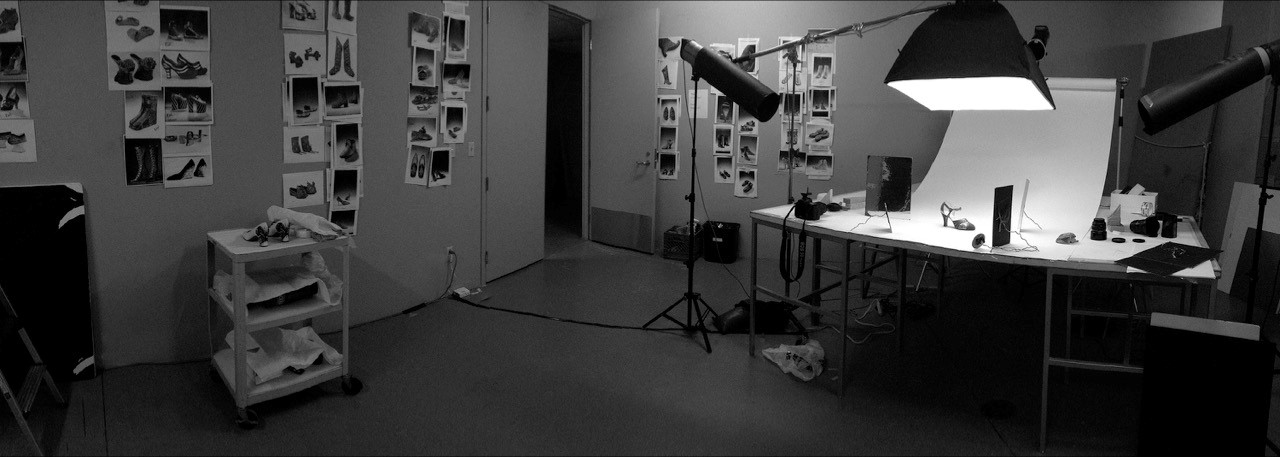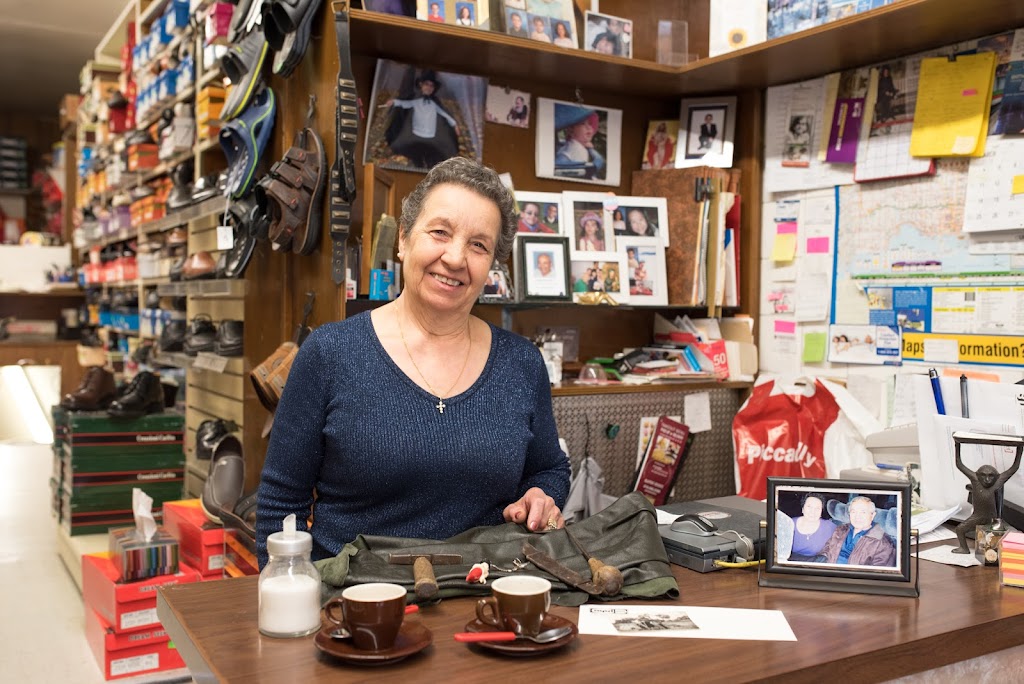Thank you so much to everyone who tuned into our first Instagram Live! In case you missed it, our Creative Director & Senior Curator, Elizabeth Semmelhack had a fun chat with photographer, Ron Wood. Wood is a photographer and professor at OCAD University that has been working with the Bata Shoe Museum for years and recently photographed our new publication, The World At Your Feet. We got amazing questions that we couldn’t get to answer on the live but we got to answer them now!
1. Do you still shoot film? If so, negative or slide?
I stopped shooting film professionally in 2005 when I switched to digital. Before then, when I was shooting film for the Bata, I used slide film. It has a higher resolution than negative film. I also used a medium format camera that gave me an image (slide) that was 4X the size of 35mm film, therefore 4X sharper. These images were scanned digitally for marketing, enlarging for display posters, and catalogue production. The new high-resolution 35mm digital cameras of today are totally sufficient for most applications. I do still shoot film as a demonstration method for my analogue (film) photography students at OCAD University.
2. Can you give any advice on lighting and diffusers when photographing?
The World at Your Feet was photographed over five weeks using a strobe electronic flash system with five lights, and with attachments such as cones, grid, and a soft box. I did not use a tripod because the duration of the strobe light is 1/10,000 of a second, which captured the image the way I wanted to.
However, when I first started shooting artefact photography for museums, I could not afford to buy lots of lighting equipment. So I would create my own soft/diffused lighting using tungsten lights shining through sheets of tracing paper and matte mylar, creating the same effect as an expensive soft box.
I’m a big fan of using natural/available light. A window is a great light source. The light coming in highlights one side of an object, and on the other side you will have a shadow. To adjust the shadow you can place or have someone hold a white card or even a white sheet on the shadow side to reflect the light back. Having the card close creates more light, further away means less light.
Something to keep in mind is that different lights emit different colour temperatures. Daylight is bluer than indoor lights, which can be different than fluorescent lights which are different from electronic flash. Daylight is also inconsistent. Sunrise and sunset light is much warmer than high noon.
Diffusing the image or parts of the image can be done in post-production.
3. Do you do any retouching pre and post digital age?
Photographers and post-production specialists are partners in the process of image capture. The person who does my post-production was on-site during the shoot, and was in charge of downloading files onto a Mac Power Book, and of all the content management of more than 4,000 shots taken over five weeks. When the shooting part was over, she adjusted all the images, which were shot in a Raw Format, and outputted them all as hi-res JPEGS. Once the final images for the book were selected, she retouched each image as required to balance highlights, shadows, remove dust, and a multitude of other housekeeping tasks such as cropping, applying various adjustments using Photoshop, and final preparations for the printer, Rizzoli Electra.
4.Do you find it more difficult to shoot artefacts since you cannot handle the objects yourself?
Not being able to handle the shoes wasn’t a problem. Staff from the Museum were always present, and their job was to handle the shoes and assist me during the shoot when needed. We always discussed the shot in detail, and worked together to figure out some of the challenges that came up. Every shoe required precise placement, and when adjustments had to be made, they put on their white gloves and moved the shoes, removed stray fibers, and added wedges under the soles of the shoes following my instructions.
5.How do you deal with lighting when it comes to more fragile objects or objects that produce harsh reflections (i.e. the nalin shoes with the bowl)
The nalin shoe set was truly a challenge. It was highly reflective and very detailed. We used every light we had on that shot, and six to eight different reflective surfaces (foils, mirrors of various sizes, large pieces of white foamcore, etc.), all in different sizes. The lighting set-up started with a soft box above, then additional lighting was added from behind and from the sides, some with different size cones to narrow the beams emitted. We used mirrors and other reflective surfaces to bounce light into shadow areas and added highlights where necessary. I took over thirty shots with different lighting combinations for the nalin shoe.
Thank you so much to Ron Wood for being our first guest on our Instagram Live and for taking the time to answer these questions!








